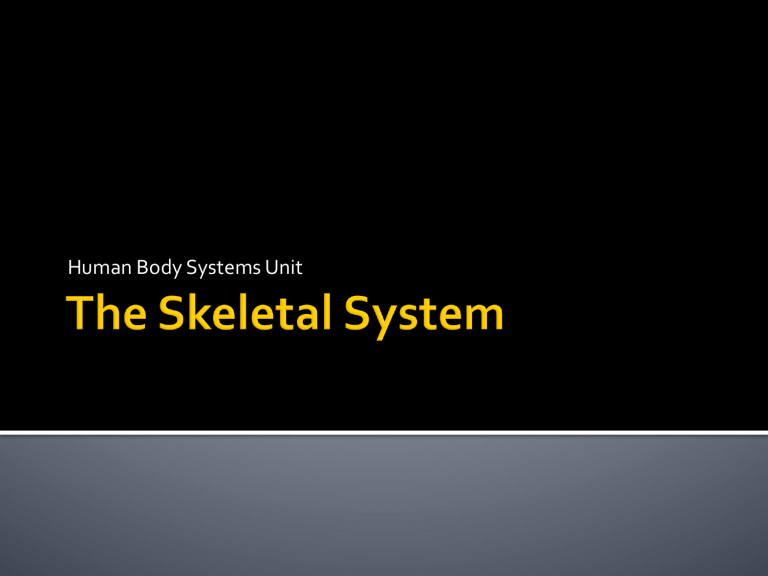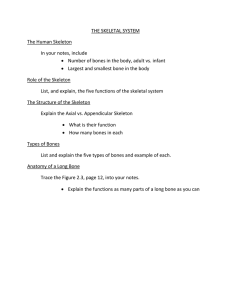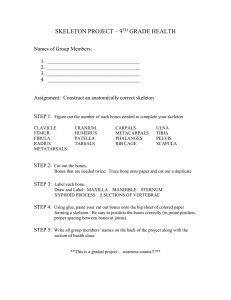
Human Body Systems Unit Catalyst 1. What is the job of the frame/walls of a building? 2. Why do you think we have bones? 3. What do you think would happen if we didn’t have bones? When a baby is born, not all of the bones in their skull have fused together so they have soft spots on their head called fontanel Adults have 206 bones in their body The framework of bones and other tissues that supports the body Tissue Description Compact Bone The hard, dense outer layer of bone Spongy Bone Hard, but has many “holes” in it Marrow Soft tissue with the spongy bone, makes blood cells Axial skeleton – consists of 80 bones in the head and trunk of the human body Appendicular skeleton – composed of 126 bones that make up the appendages, or the parts that are joined to something larger, of the human body Axial skeleton – consists of 80 bones in the head and trunk of the human body Appendicular skeleton – composed of 126 bones that make up the appendages, or the parts that are joined to something larger, of the human body Shape and Support Movement Protection Production Storage Skeleton determines shape of your body just like the frame determines the shape of a building Bones form joints, which is a place where two bones come together Joints allow bones to move in different ways Skull protects your brain Rib cage protects heart, lungs, and other organs in the center of your body Bones produce (make) blood cells The long bones in your arms and legs can be thought of as factories that make certain blood cells Bones store minerals until body needs them These minerals include calcium and phosphorus, which are in many foods we eat


